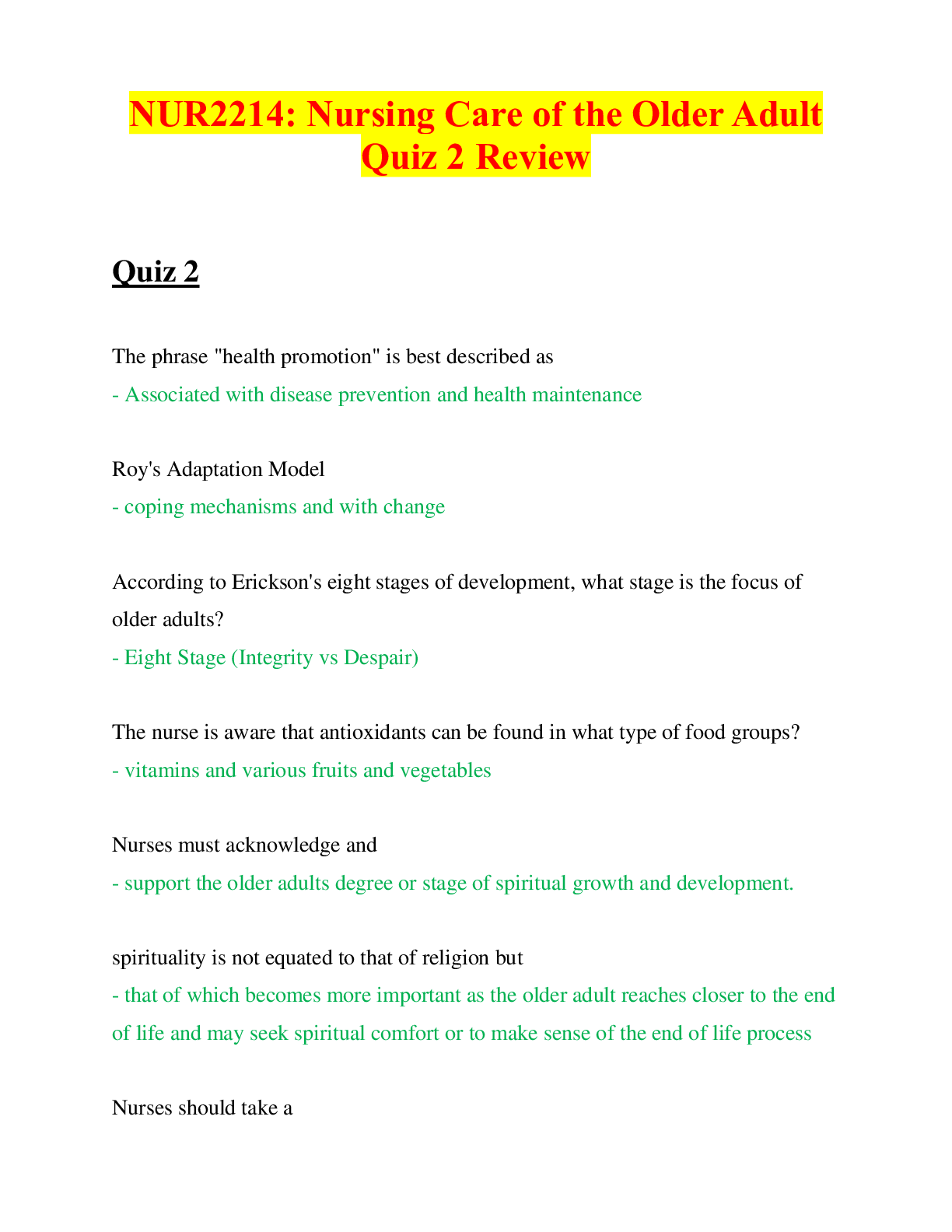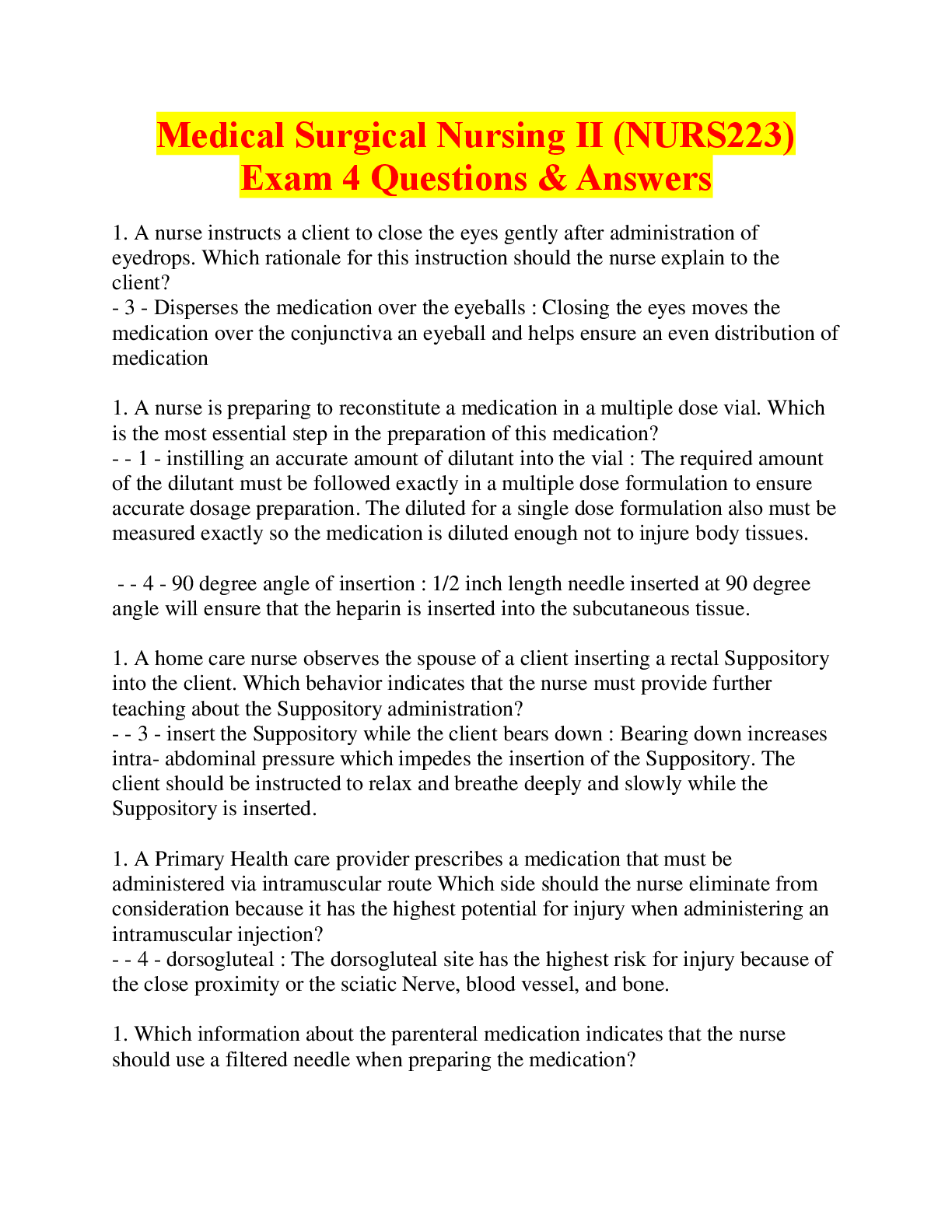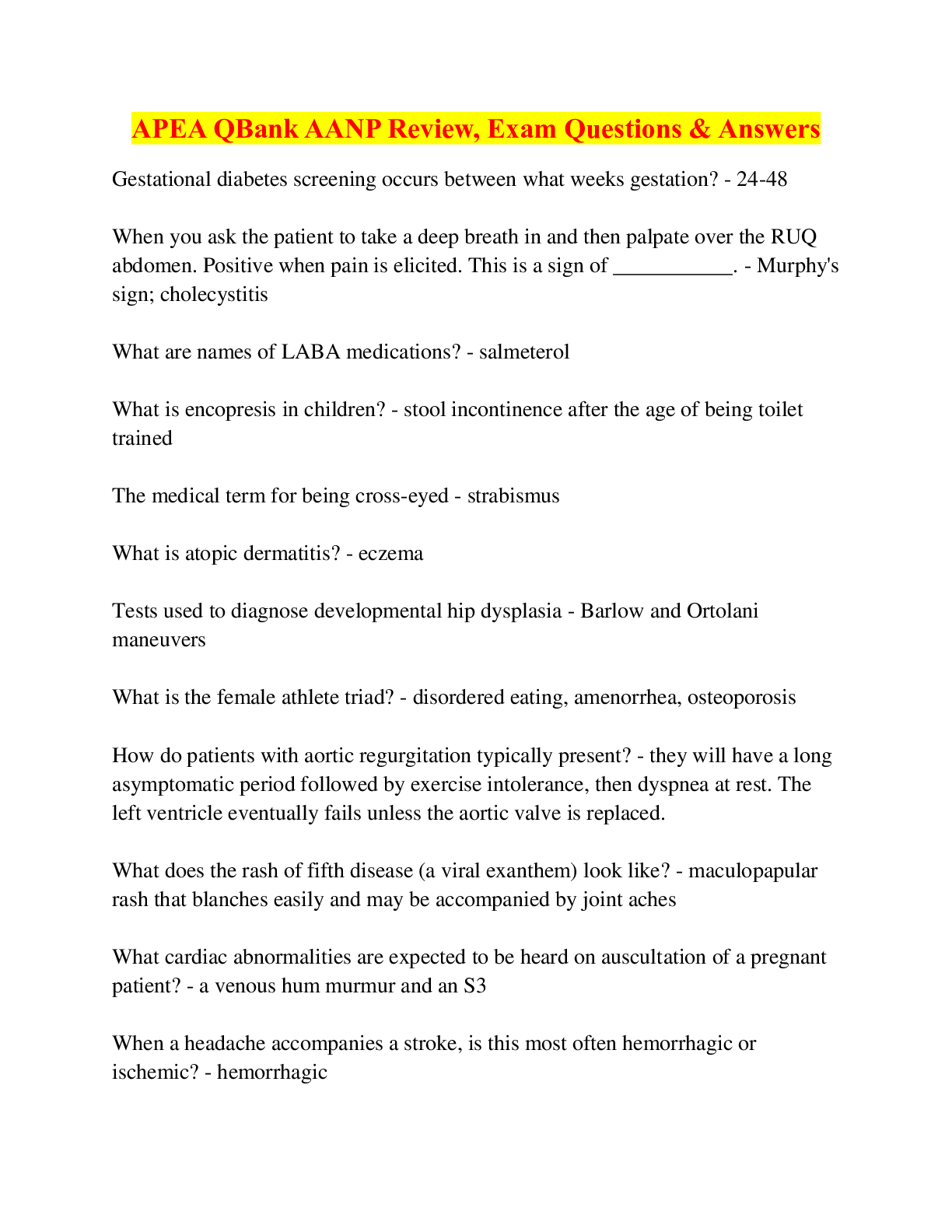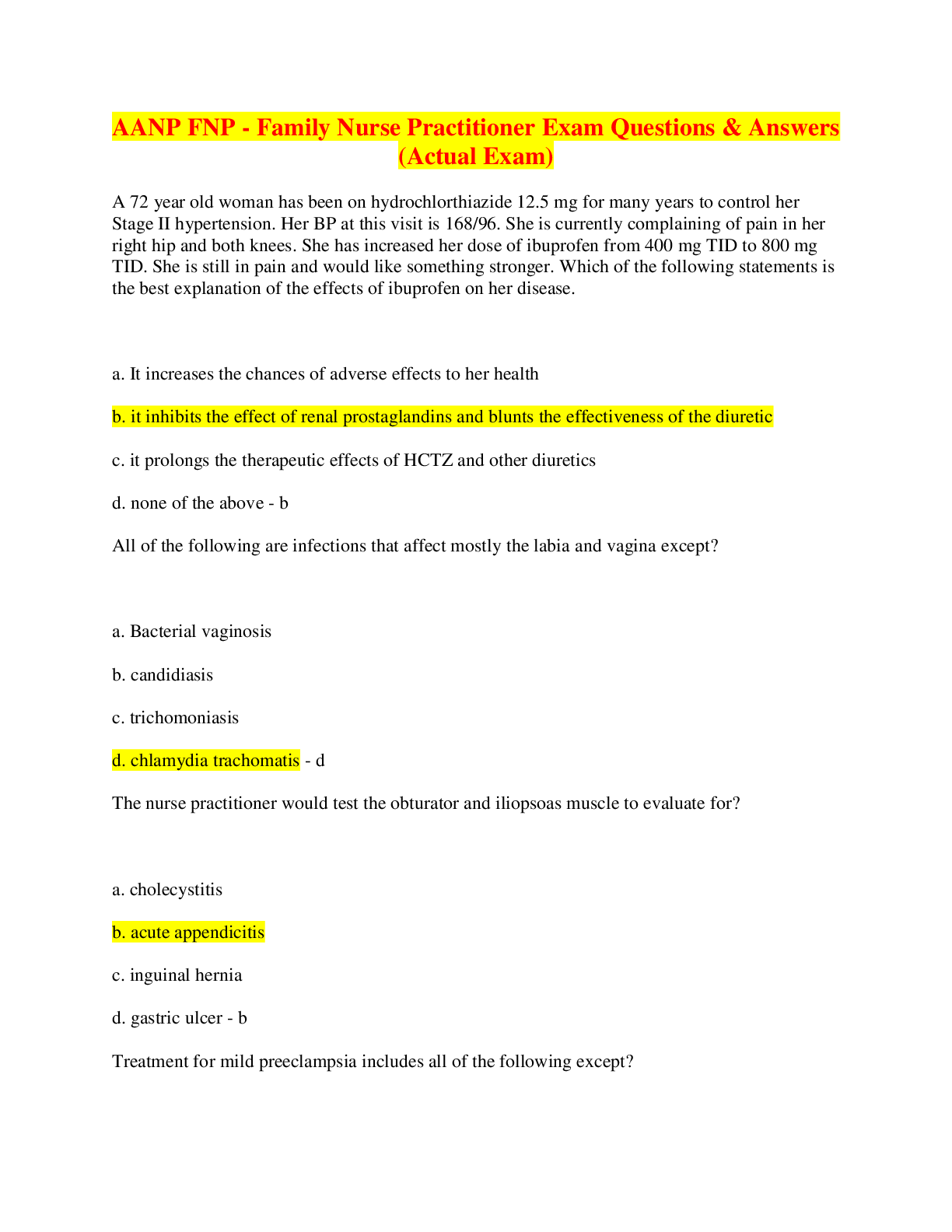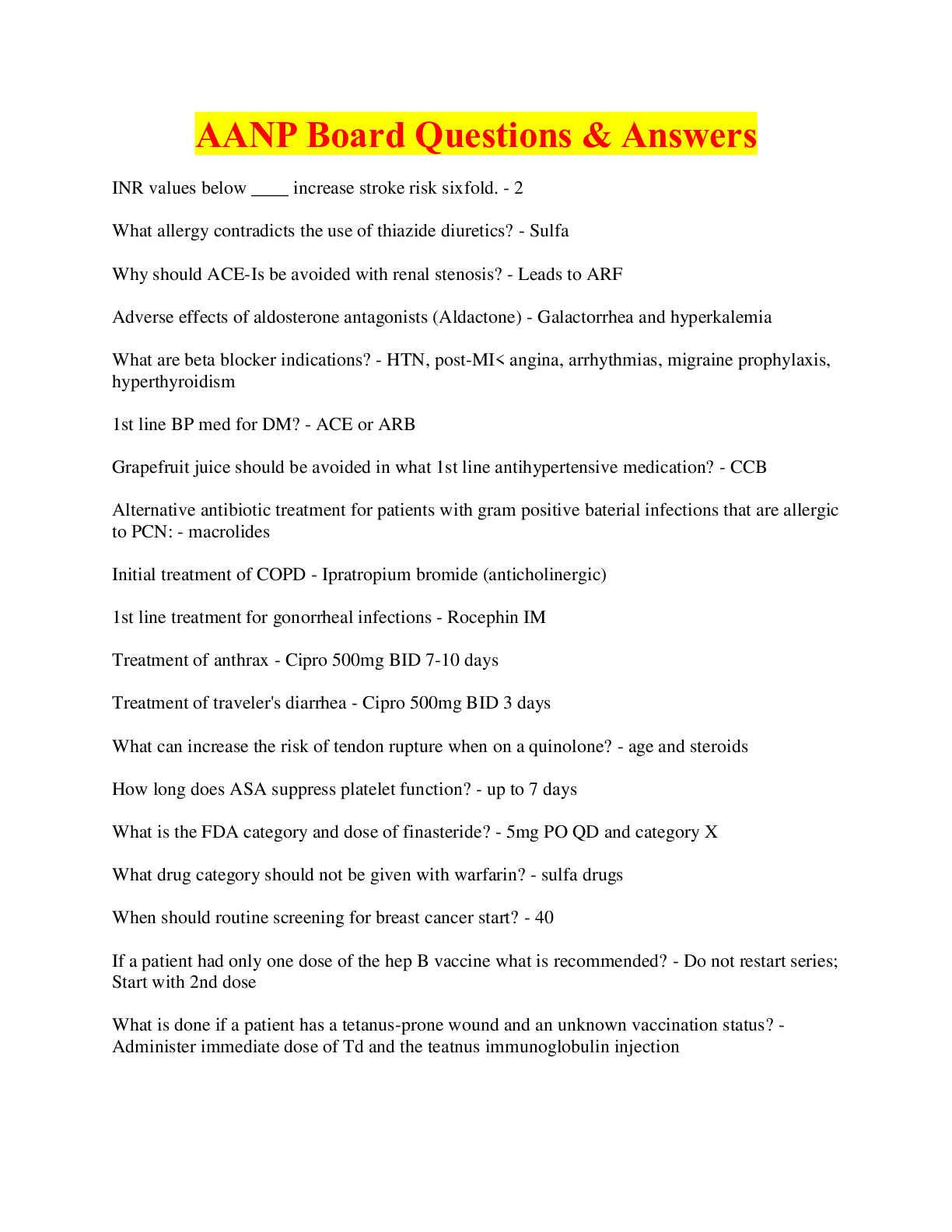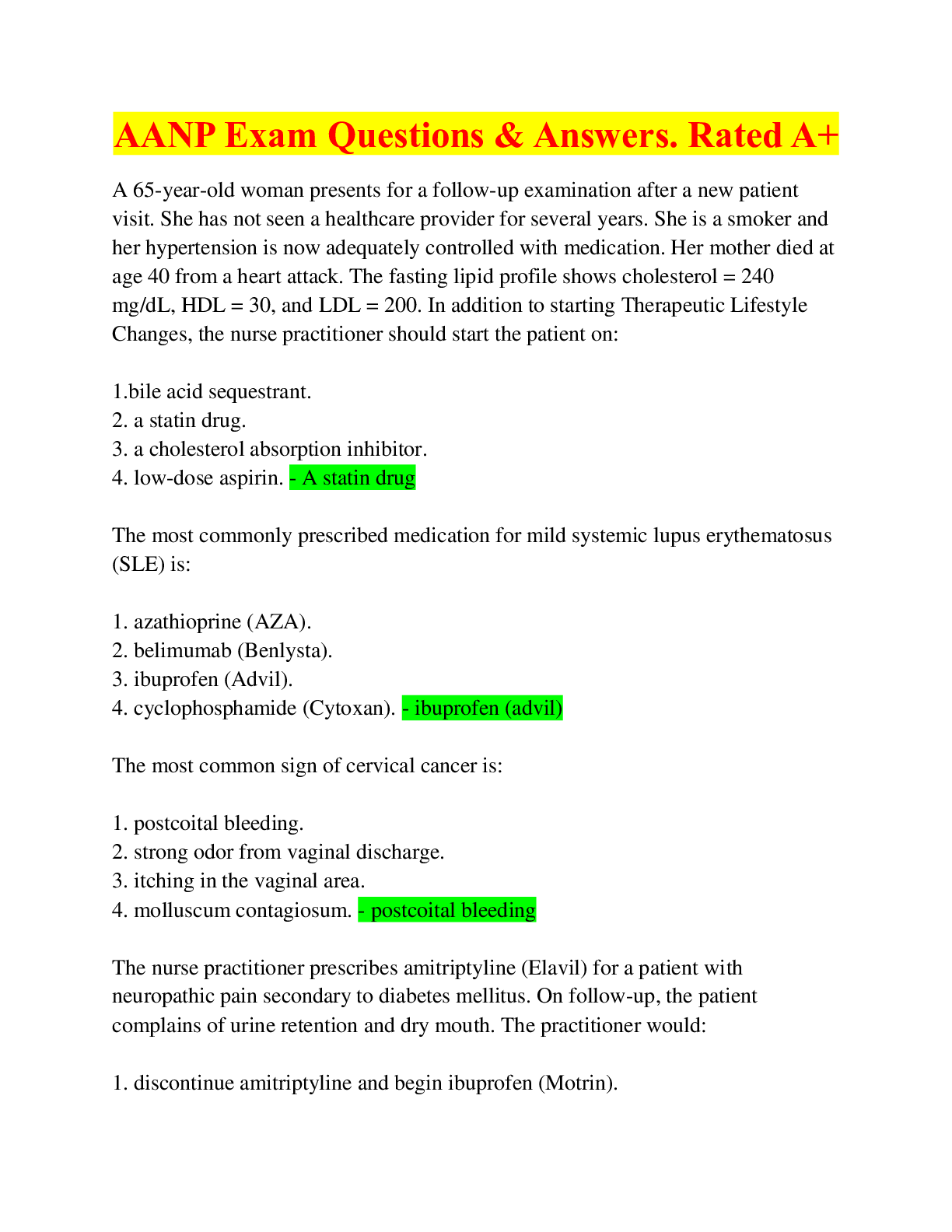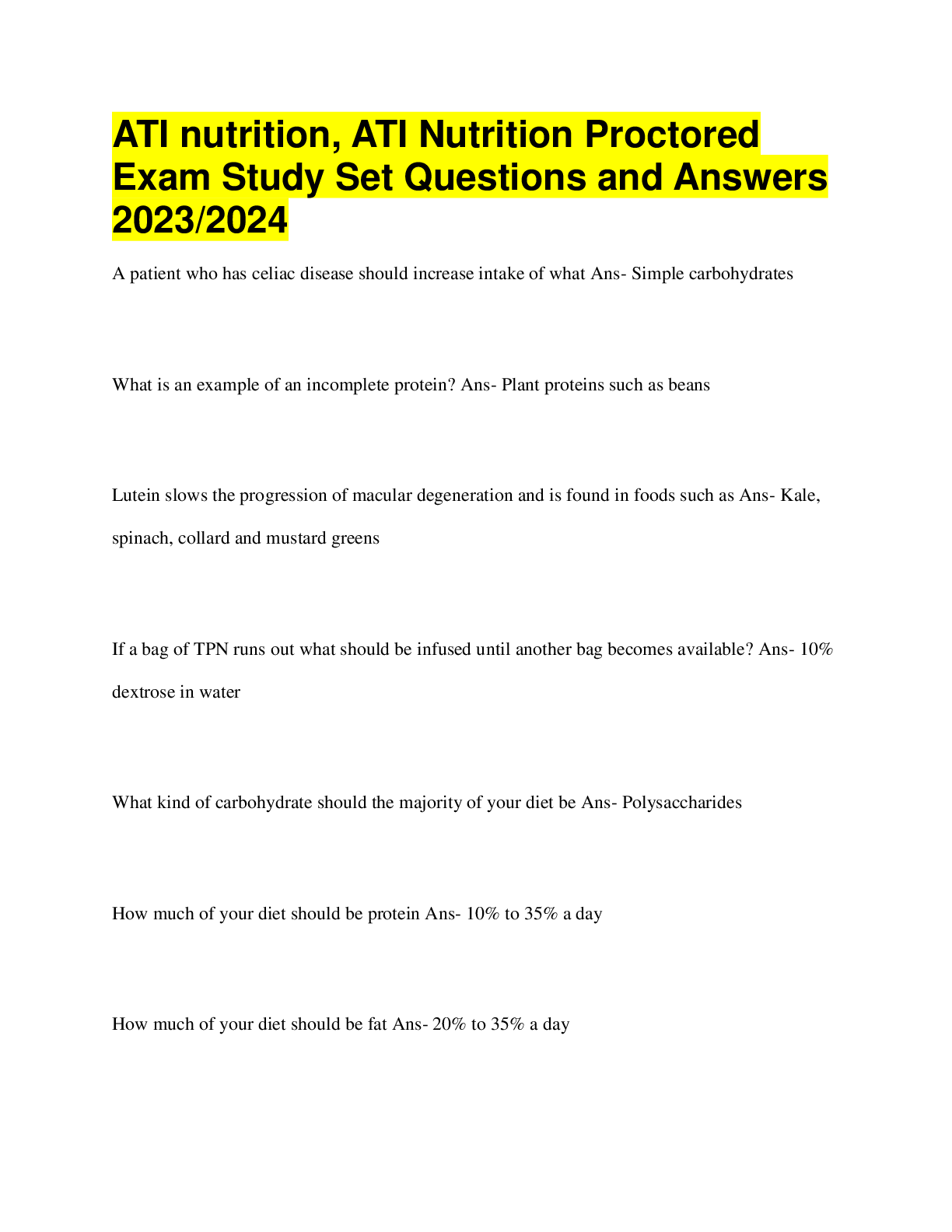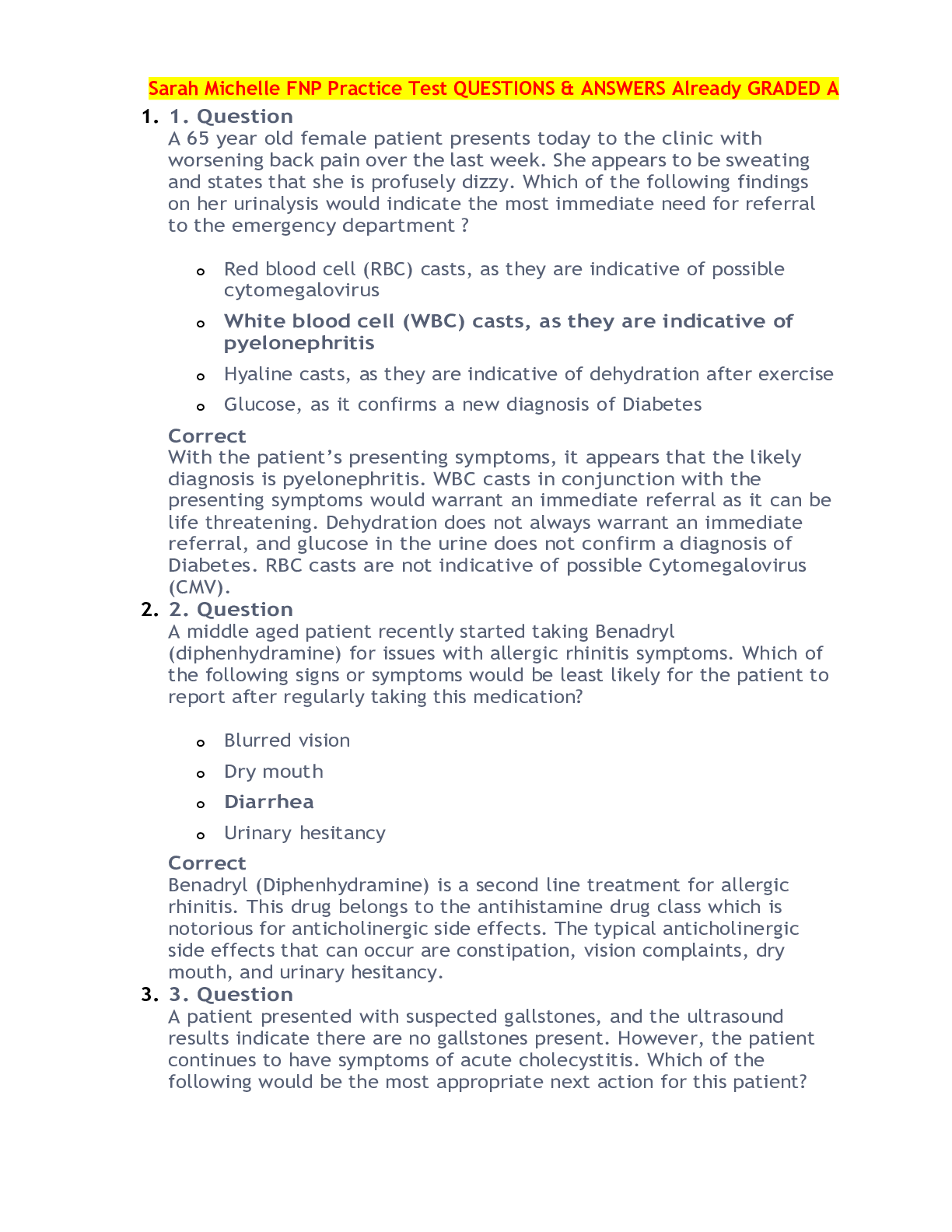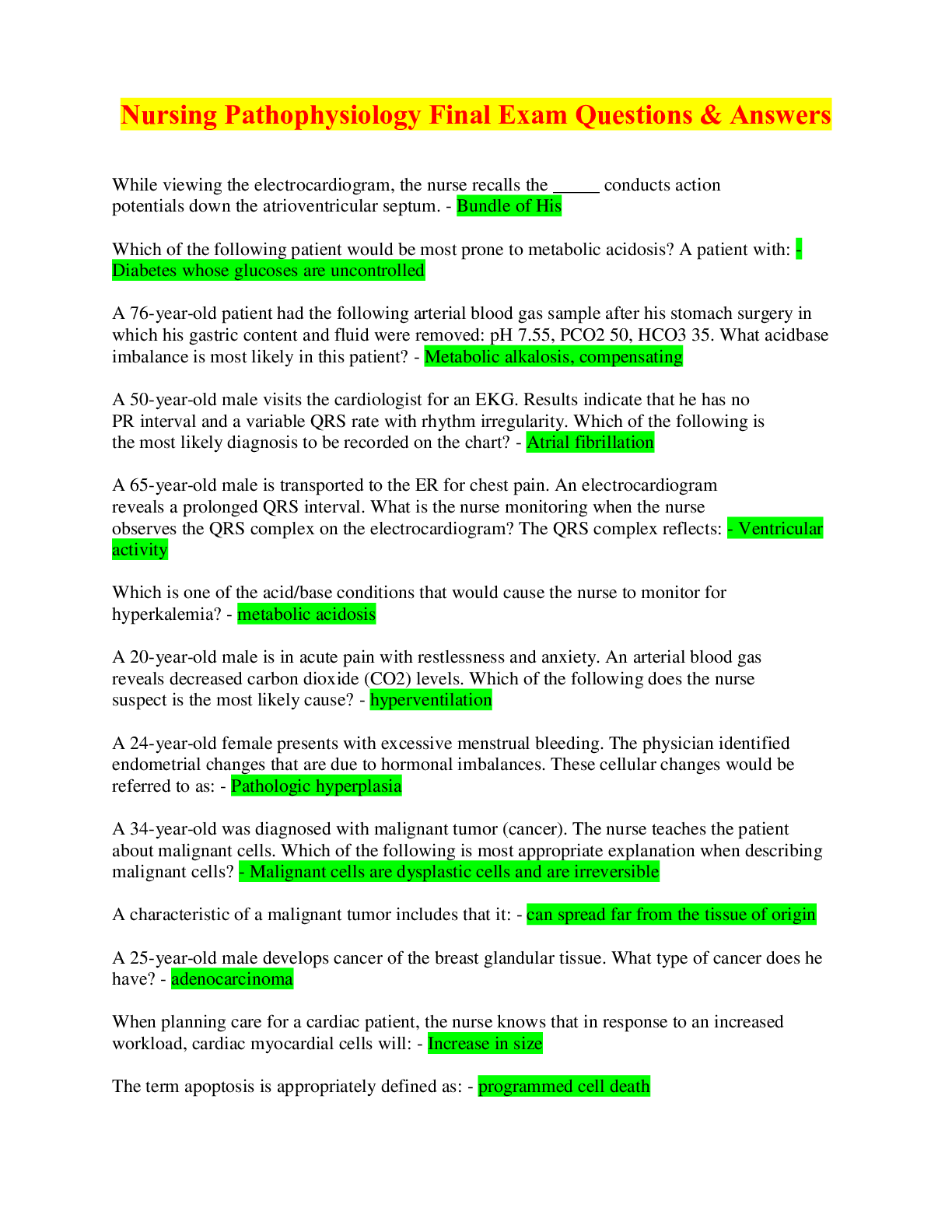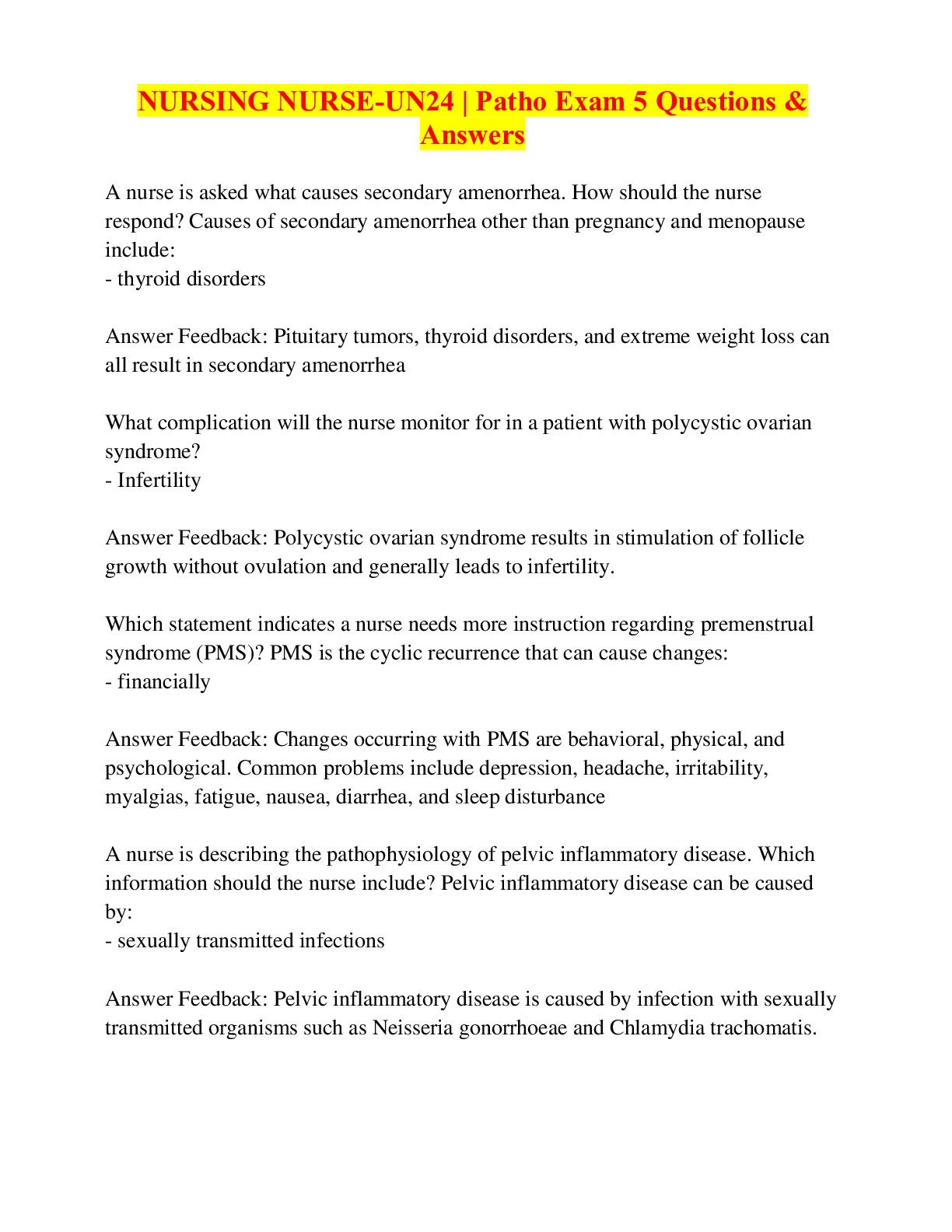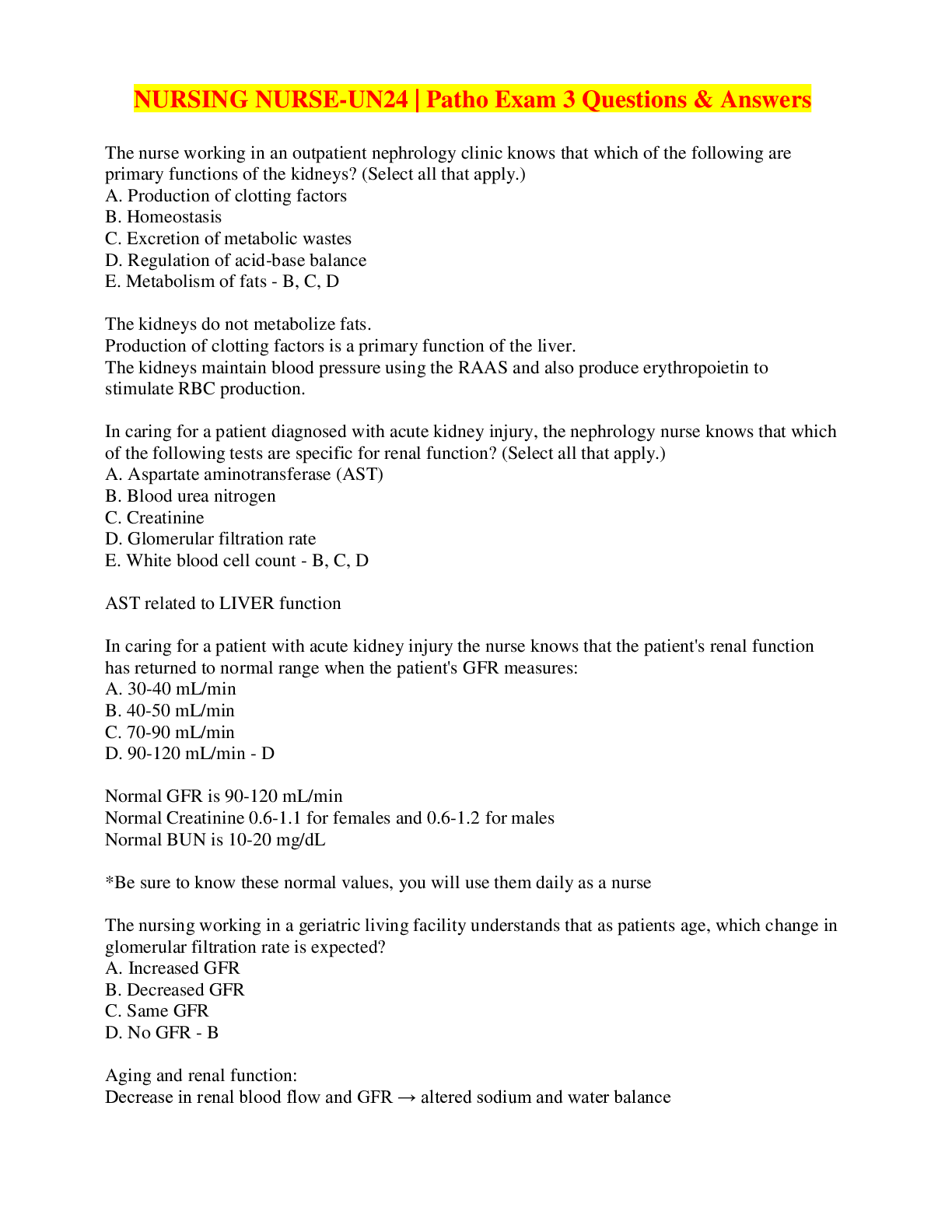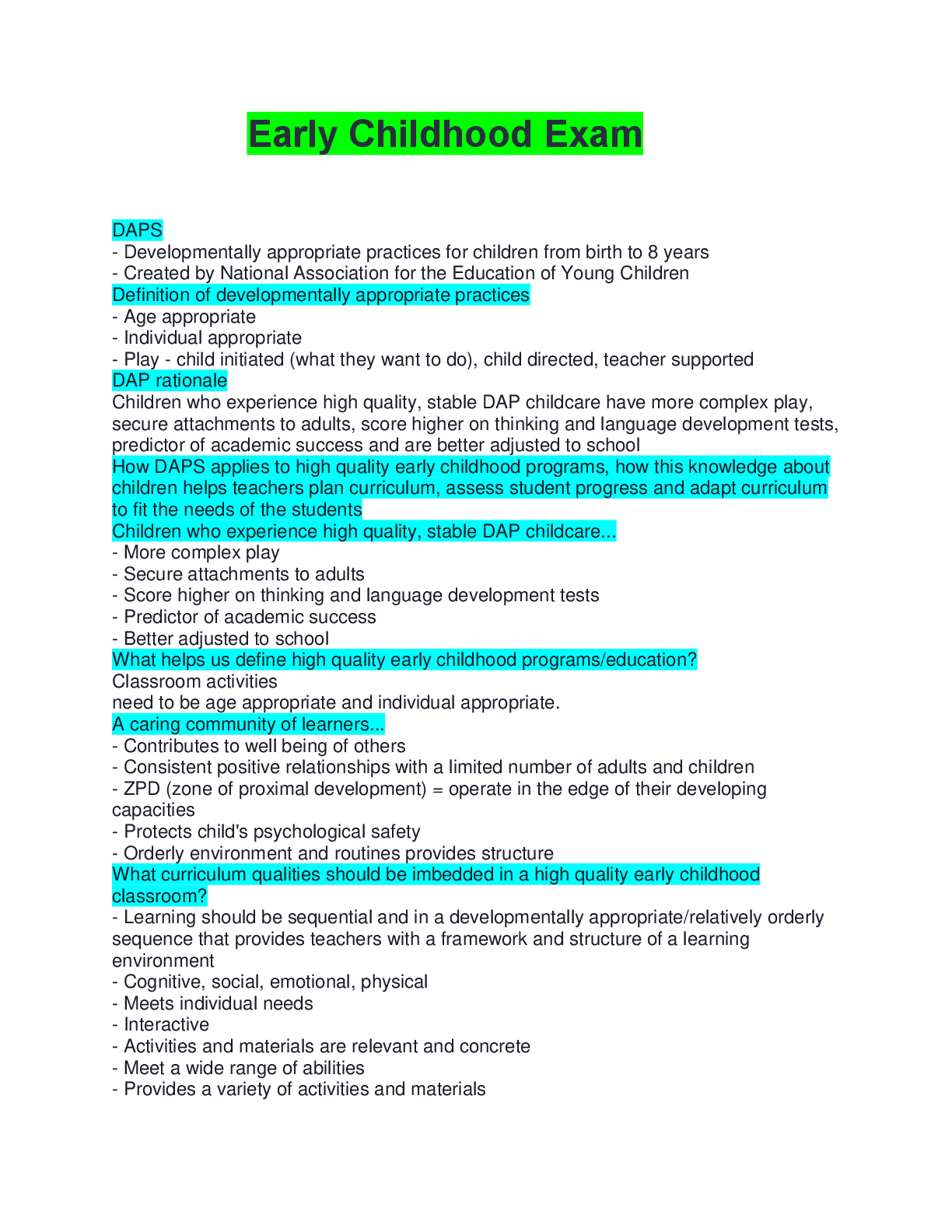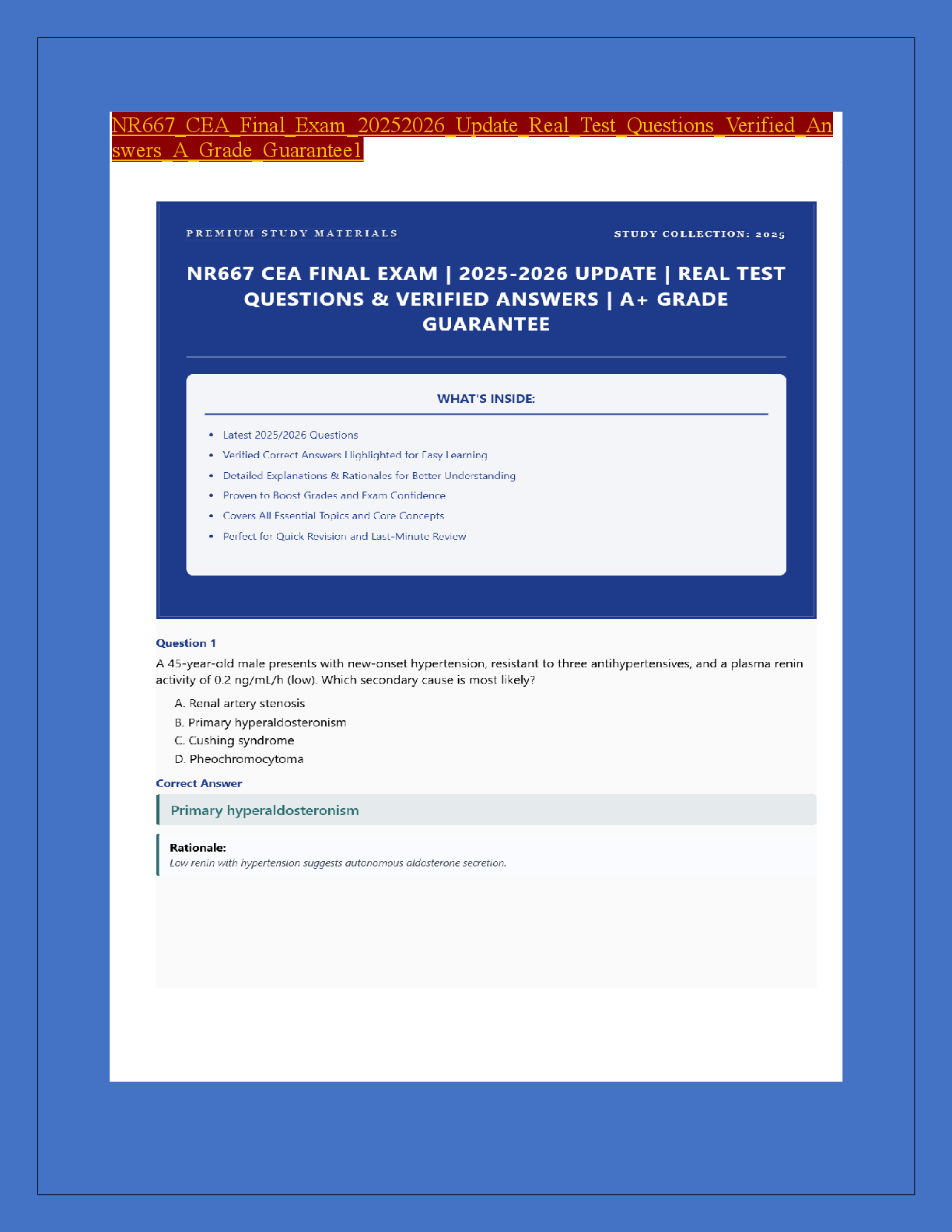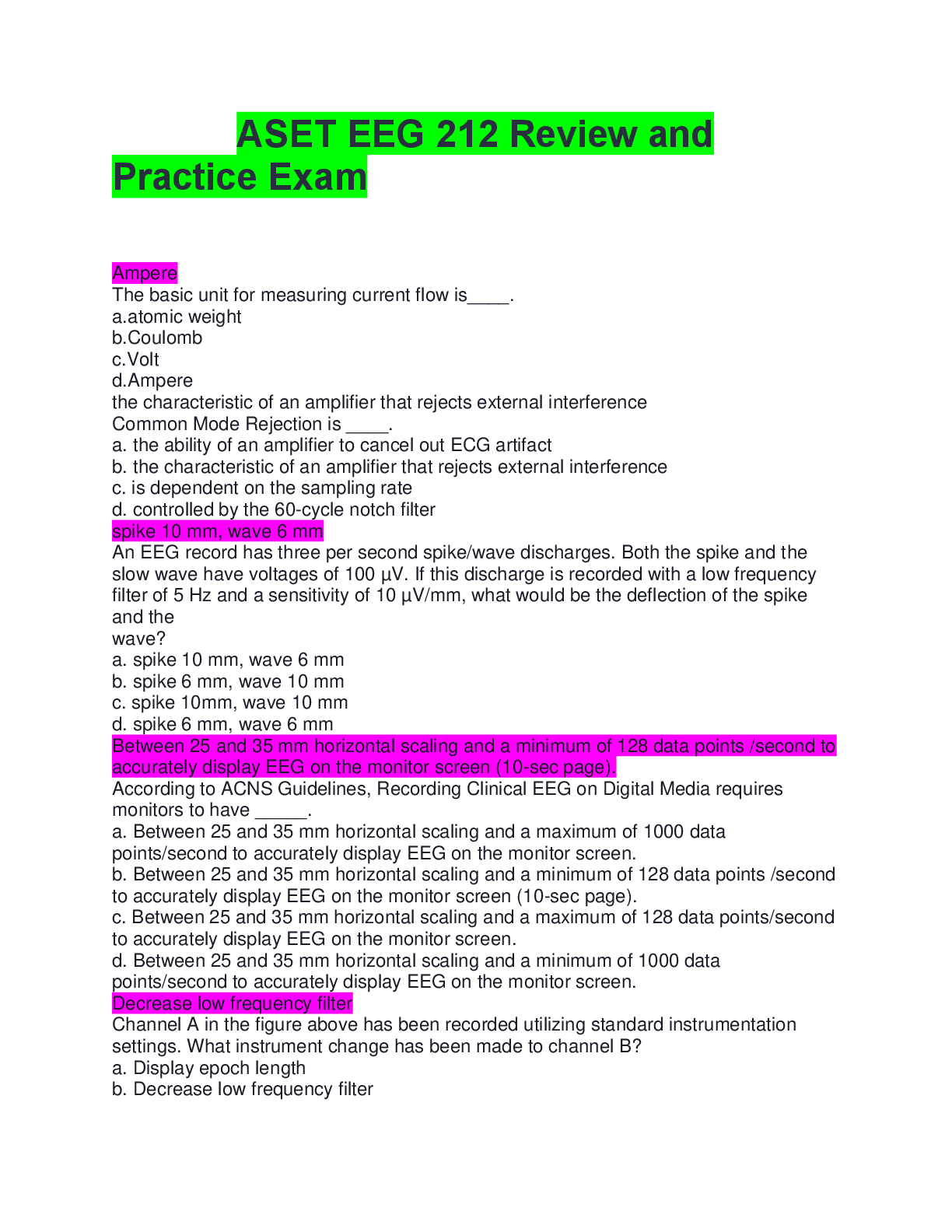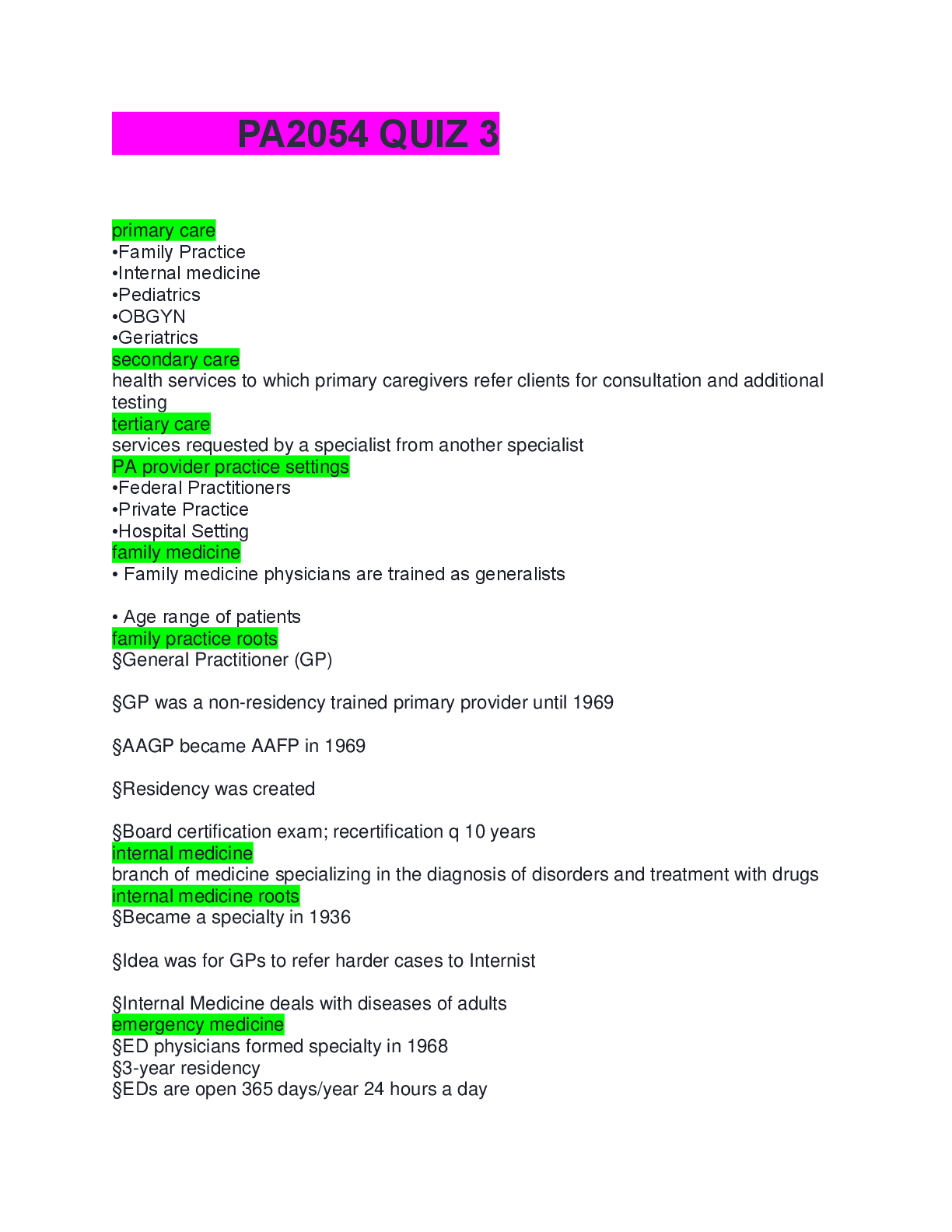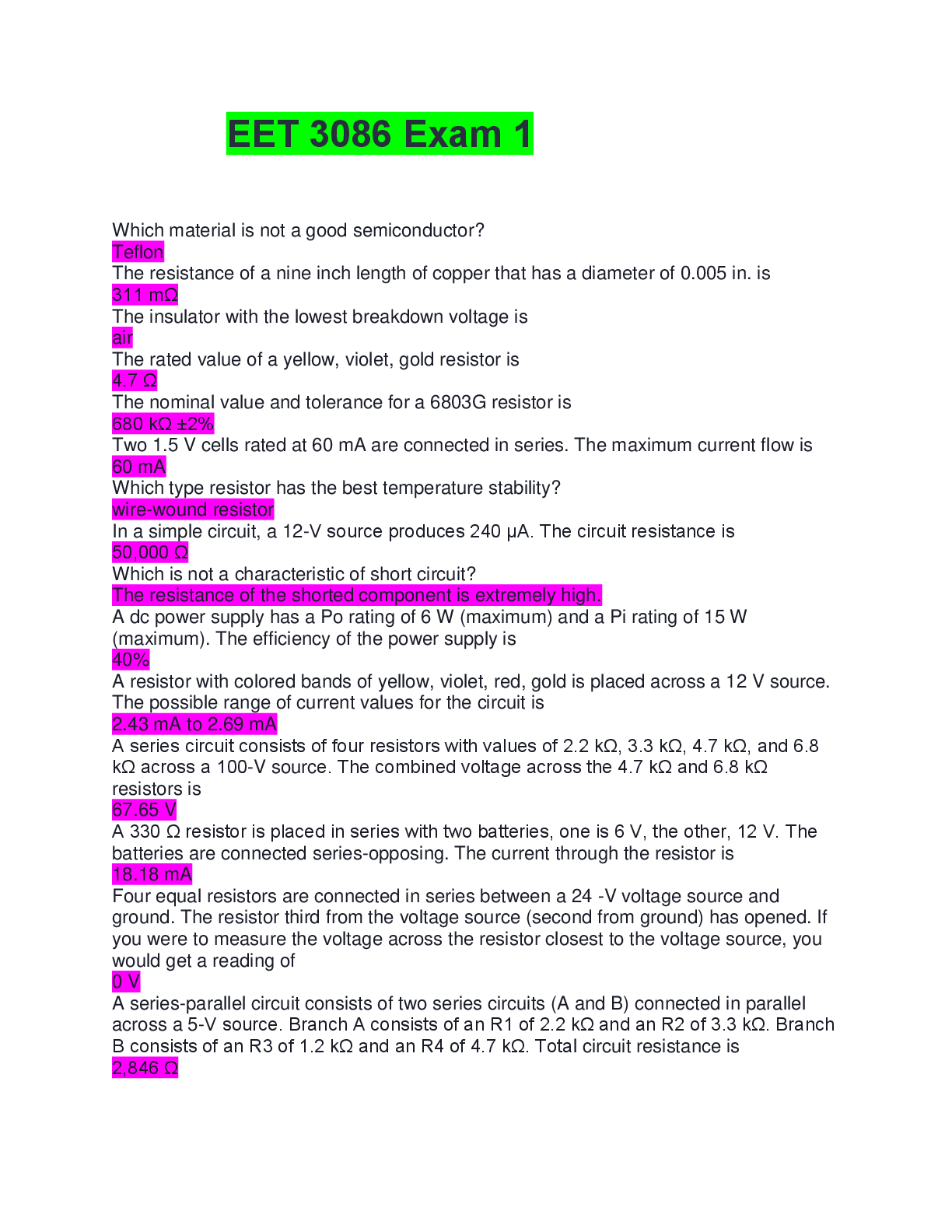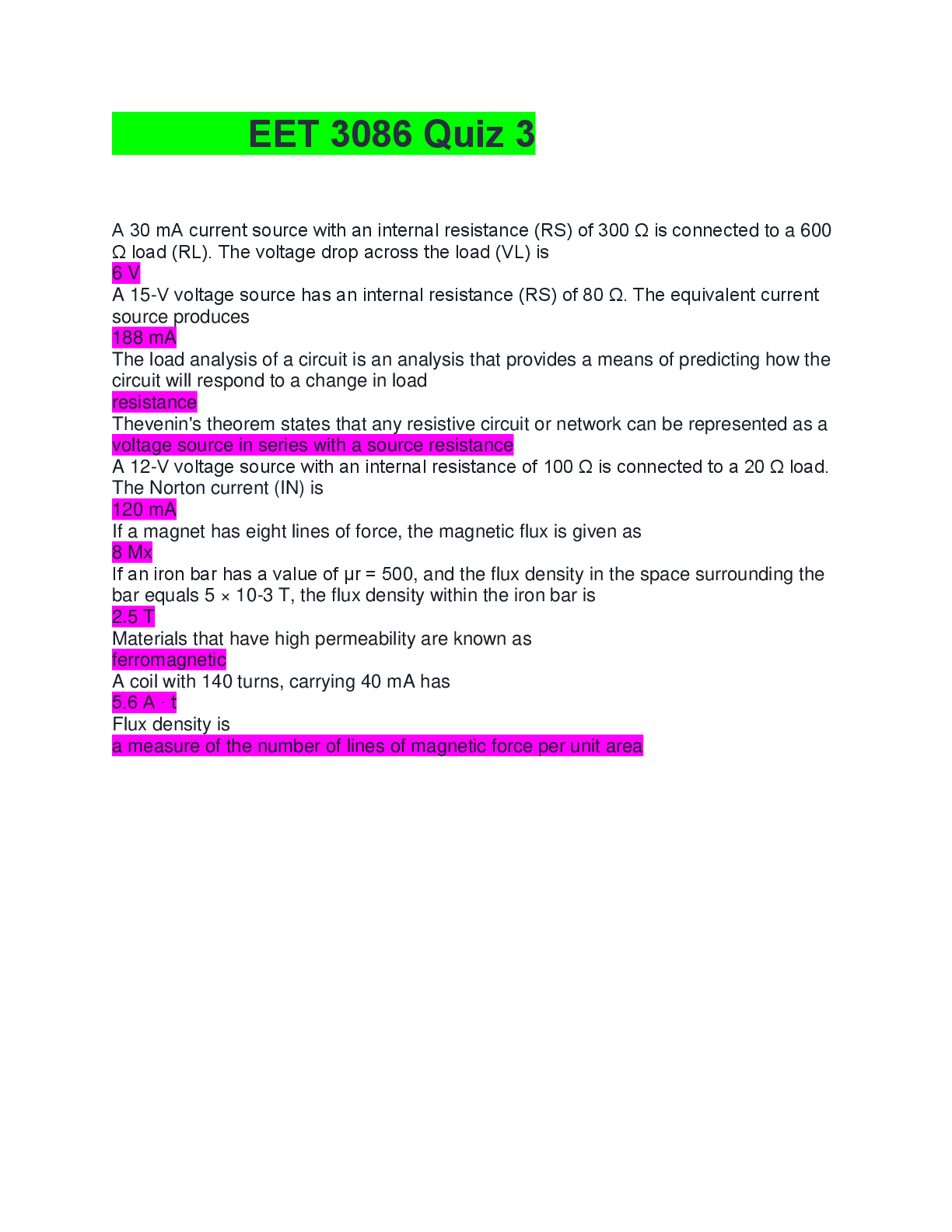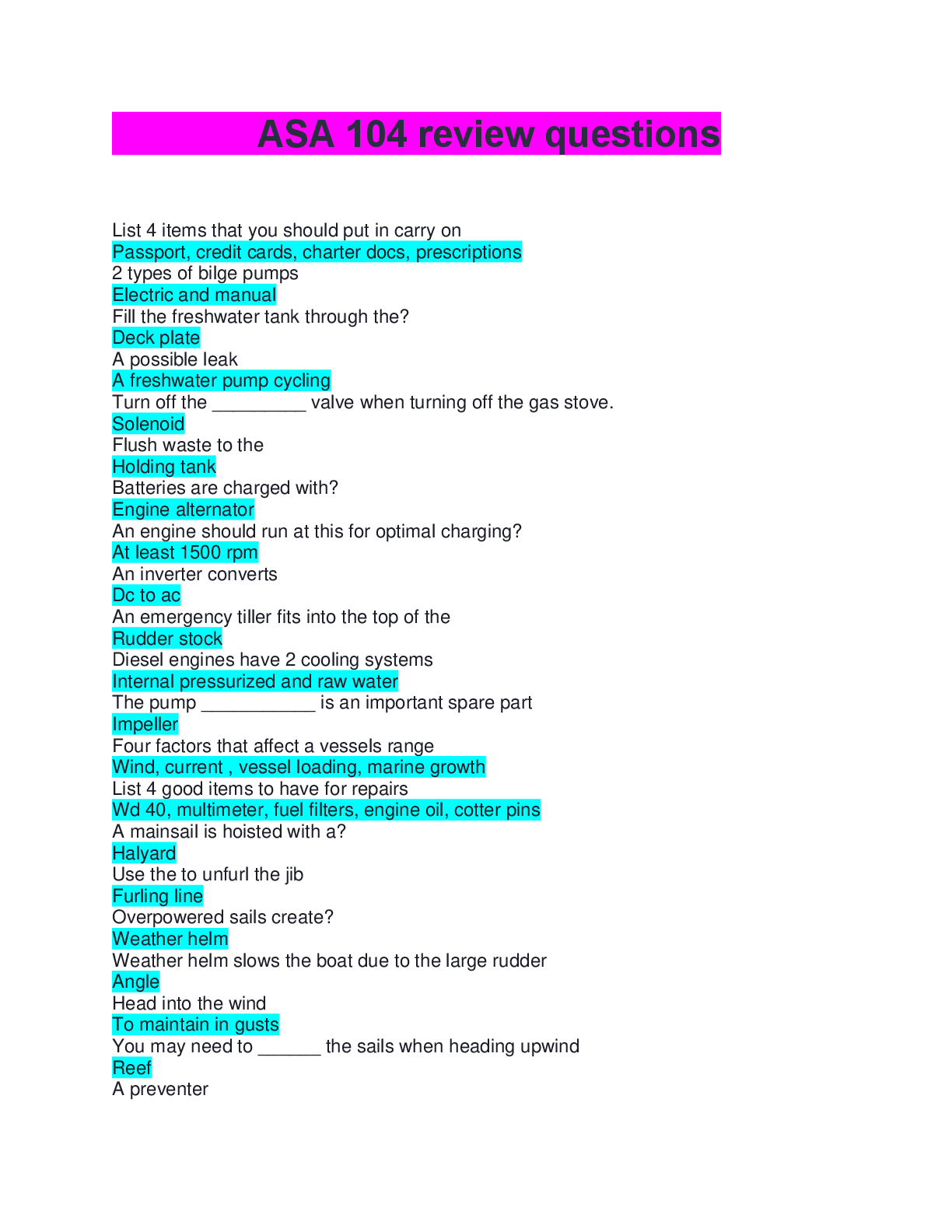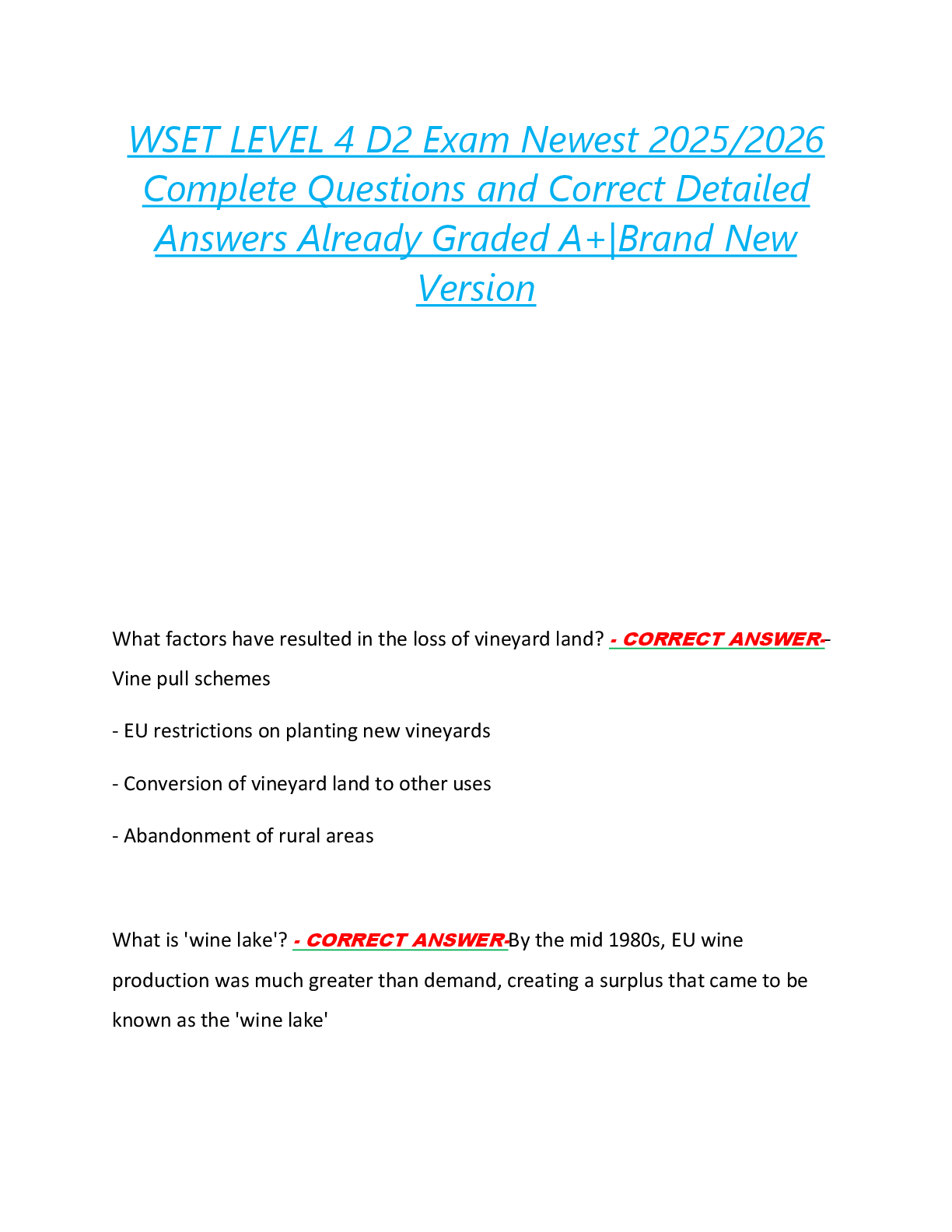*NURSING > EXAM > Hurst Readiness Exam #3 Questions & Answers with Deeply Explained Rationales (All)
Hurst Readiness Exam #3 Questions & Answers with Deeply Explained Rationales
Document Content and Description Below
Hurst Readiness Exam #3 Questions & Answers with Deeply Explained Rationales-Which menu selection by the client diagnosed with nephrotic syndrome indicates that teaching of proper diet was understood? ... You answered this question Correctly 1. Pancakes with whipped butter, syrup, bacon, apple juice 2. Scrambled eggs, sliced turkey, biscuit, whole milk 3. Grits, fresh fruit, toast, coffee 4. Bagel with jelly, hash browns, tea Rationale 2. Correct: Client needs low sodium and increased proteins. 1. Incorrect: This selection is too high in sodium and fats. 3. Incorrect: This selection has no protein. Remember, nephrotic syndrome is the exception to the rule of limiting protein. These clients need increased protein to compensate for the large loss of protein in the urine. 4. Incorrect: This selection has no protein. Remember, nephrotic syndrome is the exception to the rule of limiting protein. These clients need increased protein to compensate for the large loss of protein in the urine. Following a total hip replacement, the nurse provides discharge teaching to the client. The nurse knows that teaching was effective when the client states which activities are safe to perform? You answered this question Correctly 1. Using an abduction pillow while sleeping 2. Crossing the legs 3. Using a toilet extender 4. Showering rather than taking a bath 5. Tying shoes Rationale Strategies 1., 3., & 4. Correct: The client should use an abduction pillow to keep hip in proper alignment and prevent hip dislocation. A toilet extender keeps the hip in proper alignment and prevents hip dislocation. Showering rather than sitting in a tub will prevent flexion of the hip. 2. Incorrect: Crossing the leg can pop the hip out of place and prevent total healing and success with the replacement. 5. Incorrect: To tie shoes, the client has to bend over which can pop the hip out of place. The client would need to have shoes that do not require tying or have someone do it for them. What risk factors should the nurse include when conducting a class about type 2 diabetes mellitus? You answered this question Correctly 1. Fat distribution greater in abdomen than in hips. 2. Being underweight. 3. Having type 1 diabetes as a child increases risk for type 2 diabetes. 4. Caucasians are more likely to develop type 2 diabetes than Hispanics. 5. Polycystic ovary syndrome. Rationale Strategies 1., & 5. Correct: If the body stores fat primarily in the abdomen, risk of type 2 diabetes is greater than if body stores fat elsewhere, such as hips and thighs. Women with polycystic ovary syndrome have increased risk of diabetes. 2. Incorrect: Being overweight is a primary risk factor for type 2 diabetes. The more fatty tissue, the more resistant cells become to insulin. 3. Incorrect: A type 1 diabetic will remain a type 1 diabetic. 4. Incorrect: African Americans, Hispanics, American Indians, and Asian Americans are more likely to develop type 2 diabetes than Caucasians are. The nurse is caring for a client following spinal surgery. The client is placed on methylprednisolone. What additional drug therapy would the nurse expect to be prescribed with methylprednisolone? You answered this question Correctly 1. Pantoprazole 2. Phenytoin 3. Imipramine HCI 4. Aminocaproic acid Rationale Strategies 1. Correct: A potential side effect of methylprednisolone is a peptic ulcer. The primary healthcare provider will prescribe a proton pump inhibitor or H2 blocker to prevent this side effect. 2. Incorrect: Phenytoin is an anticonvulsant. Seizures are not a side effect of methylprednisolone. 3. Incorrect: Imipramine HCI is an antidepressant which is not routinely given with methylprednisolone (Although mood changes can occur with steroid administration, anti-depressants are not routinely given). 4. Incorrect: Aminocaproic acid is given when clients are bleeding. Bleeding is not a side effect of methylprednisolone. In what order, after initially washing hands, should the nurse change a dressing on an infected abdominal surgical wound that has a Penrose drain and a large amount of purulent drainage? Place in priority order from first to last. You answered this question correctly. The Correct Order Apply clean gloves. Remove soiled dressings. Discard soiled dressings and clean gloves in red bag. Don sterile gloves. Clean surgical wound with moistened sterile 4x4's. Clean around Penrose drain using a circular pattern inside to outside. Place dry, sterile 4x4's over surgical wound and Penrose drain. Apply abdominal dressing pad. Your Selected Order Apply clean gloves. Remove soiled dressings. Discard soiled dressings and clean gloves in red bag. Don sterile gloves. Clean surgical wound with moistened sterile 4x4's. Clean around Penrose drain using a circular pattern inside to outside. Place dry, sterile 4x4's over surgical wound and Rationale Strategies First, apply clean gloves. Second, remove soiled dressings. Third, discard soiled dressings and clean gloves in red bag. Fourth, don sterile gloves. Fifth, clean surgical wound with moistened sterile 4x4's. Sixth, clean around Penrose drain using circular pattern inside to outside. Seventh, place dry, sterile 4x4's over surgical wound and Penrose drain. Eighth, apply abdominal dressing pad. [Show More]
Last updated: 9 months ago
Preview 5 out of 56 pages

Loading document previews ...
Buy this document to get the full access instantly
Instant Download Access after purchase
Buy NowInstant download
We Accept:

Also available in bundle (1)
Click Below to Access Bundle(s)
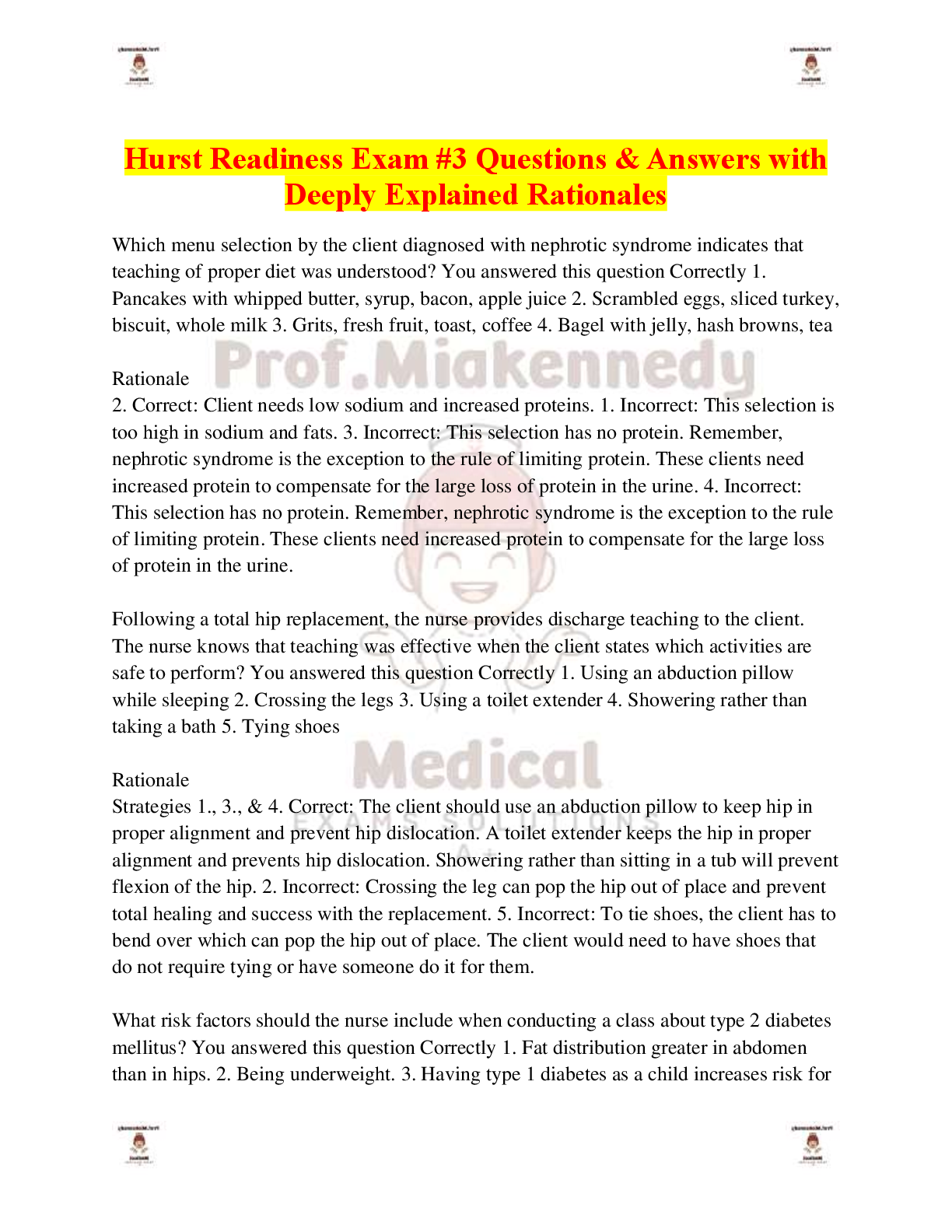
BUNDLE: Hurst Readiness Exam 1, 2, 3 & FINAL EXAM Questions & Answers ( From Real Actual Exams) Explained with Rationales, All Already Rated 100%
BUNDLE: Hurst Readiness Exam 1, 2, 3 & FINAL EXAM Questions & Answers ( From Real Actual Exams) Explained with Rationales, All Already Rated 100%
By PROF 9 months ago
$36.5
5
Reviews( 0 )
$14.50
Can't find what you want? Try our AI powered Search
Document information
Connected school, study & course
About the document
Uploaded On
Mar 04, 2025
Number of pages
56
Written in
All
Additional information
This document has been written for:
Uploaded
Mar 04, 2025
Downloads
0
Views
35

